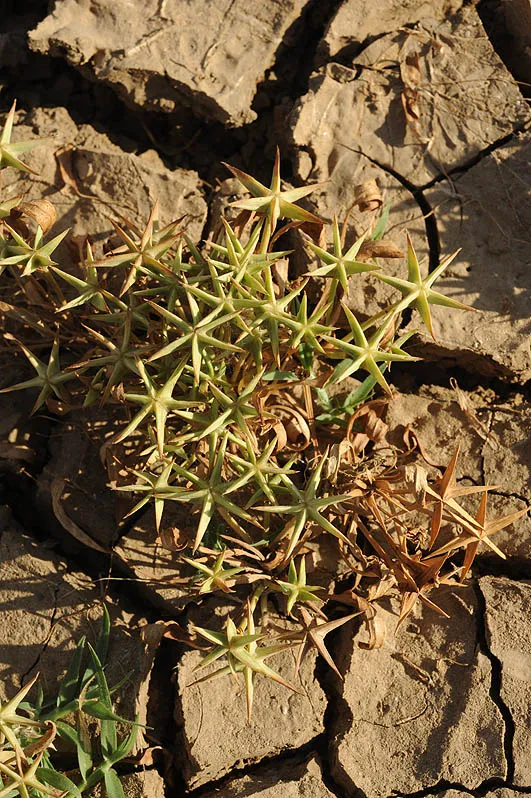Wild Peony, Male Peony
Paeonia mascula
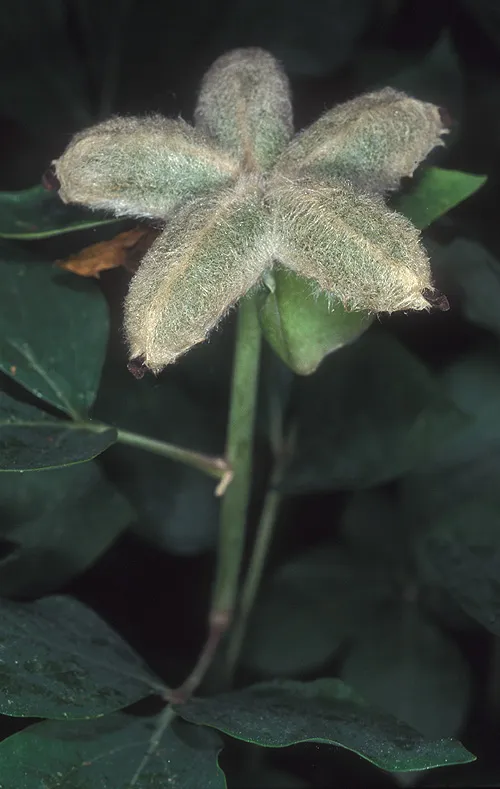
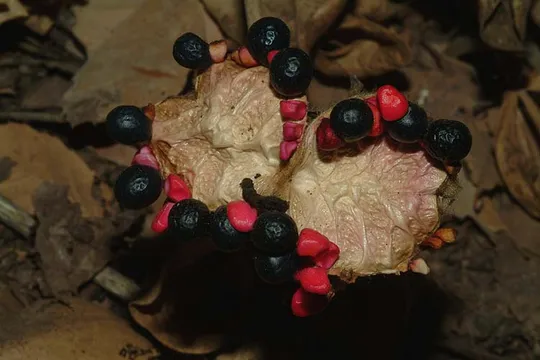

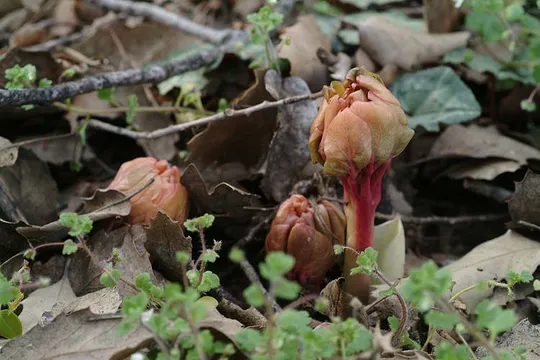
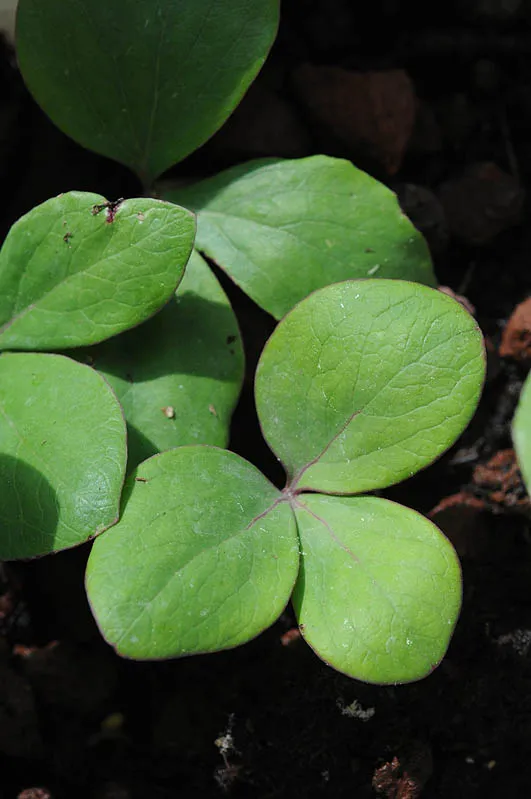
Paeonia mascula is an herbaceous
perennial plant with thick, curved tubers, which extend deeply into
the ground down to 100 cm. The herbaceous stems are hairless,
branched and 60-80 cm tall. Large leaves sprout from the
subterranean rhizome. Their upper side is hairless and vividly
green and their underside is hairless or sparsely hairy. The
leaves are divided once or twice into three lobes
and each lobe has one or two leaflets. The leaflets are large, elongated-oval, about
10 cm long. The flower has five overlapping calyx leaves. The bright pink
to purple flower is large, about 10 cm across. Each flower has
5-8 (13) large, dense petals. The numerous stamens are joined together at the
base in a fleshy ring, their filaments are bright red and their large
anthers are sulfur-yellow. The carpels are white and wooly and end in
3-5 red stigmas. Beetles pollinate the flowers, but some of the
flowers in nature were found to be sterile. The fruit has 3-5
hairywhite follicles, which are red in their inner sidewhen they open. The
seeds have a sweetish juicy pulp; fertile seeds are dark
blue to black and sterile seeds are red. This color
combination apparently attracts birds that
eat and disperse the seeds. In Israel, P. mascula
reproduces mostly asexually, particularly in closed woodlands where most of the
plants do not bloom. In well-lit areas, a higher percentage of plants
flower and produce fruit. Goats sometimes eat the flowers and leaves.
The species is known only from the Upper Galilee in the Mount Meron region in the upper Kziv Stream basin, at 9 sites, from Mount Hillel to the En HaZaken in the Kziv Stream. Outside this area only small populations are known: the northern slopes of the Mount Meron peak, Mount Bar-Yohay, Afa'im Ridge, Mount Hesed and Mount HaAri. Surveys conducted in 1973-4 and 1990-91, as well as many other observations, have shown no reduction in the species’ range and found no new sites.
Thickets of moist native woodland consisting of Kermes and Boissier oaks and limestone bedrock with and washed terra rossa soil rich in detritus and leaf litter, at altitudes of 900 meters or higher.
Paeonia mascula include taxons that are difficult to identify and they have been classified into many subsspecies, based on leaflet properties. Eig and Zohary (1939) identified Paeonia from Mount Meron as a special variant of the species (var. triternata). This taxon is now considered a subspecies whose distribution is limited to Romania, Crimea, Trans-Caucasus, Turkey, northern Iraq, Lebanon and northern Israel. It is possible that there are differences between the Mount Meron populations that grow on the edge of its range and are better adapted to local conditions and the taxons from the center of its range. This possibility increases the importance of protecting the Israeli populations. Paeonia is the only genus in its family and includes about 40 species (recently a group of species was separated into a separate genus named Glaucidium). Its main distribution area lies in the Mediterranean area, in southern and Eastern Europe and in North Africa. Some species spread to central and eastern Asia, and two species also grow in North America.
• The sites are far from human settlements, thus their sensitivity to development is relatively low. Some sites are found near dirt roads or at the edges of cultivated land or hiking trails and are not easily reached. Developing land for agriculture within the sites, despite their being part of a declared nature reserve endangers the plant’s populations. Possibly opening of the woodland with roads, intensive logging or land development creates a better lit envrionment which in turn leads to the appearance of large plants and increased flowering.
• Most of the populations in the Mount Meron region are concentrated in area of approximately area of 3 square kilometers. They form a pattern of separate patches with many densely populated clusters, although sometimes individual specimens can also be found. The patchy pattern is also characteristic of other countries and apparently is the result of successful vegetative reproduction. Population size is stable in recent decades.
• The species is common in the forests of Turkey and Greece, where it faces no threat of extinction.
• The species is protected by law. All sites are included in the Mount Meron Nature Reserve, but the status of the reserve is threatened by legal action and the spread of agriculture.
1. annual monitoring of populations at all sites. In the case of an obvious decrease in the number of flowers controlled opening of forests (for light) should be considered. 2. Alternative trails should be developed on Mount Hillel (even if this entails deliberate construction) to prevent possible damage by the many hikers using the marked trails every year.
Common in southern European countries bordering the Mediterranean Sea, and continues eastwards to Iran. In the Levant it grew in Lebanon, Cyprus and Syria: As its distribution becomes more southerly the species grows on higher mountains and its populations become more fragmented. In Cyprus the plant grows at altitudes above 1,500 meters.
An herbaceous perennial plant that is rare in Israel and grows only in the Mount Meron region and in a limited number of small sites on the upper basin of the Kziv Stream. This is the global southern limit of its range. The species is endangered in Israel due to its rarity, limited distribution and its attractiveness. All the sites are within the Mt. Meron Nature Reserve, but developing land for farming and forging roads to access fields are a threat to the plant’s populations.
אורטל, ר. 1975. אדמונית החורש. שמירת טבע בישראל – מחקרים וסקרים, דו"ח מספר 1. 17-33 הוצאת רשות שמורות הטבע.
Eig, A. & M. Zohary. 1939. Plants new for Palestine 1. P.J.B. Vol. 1/3:309
Stern, F.C.1946, Study of the Genus Paeonia.
Current Occupancy Map
| 1000 squre meter pixel | 5000 squre meter pixel | 10000 squre meter pixel | |
|---|---|---|---|
| number of observations | 0 | 0 | 0 |
| in total pixels | 0 | 0 | 0 |
| Family | Paeoniaceae |
| Classification | On the endangered species list |
| Ecosystem | Mediterranean |
| Chorotype | Mediterranean |
| Conservation Site | Mount Hillel, Upper Kziv Stream |
| Rarity |
1
3
6
|
|---|---|
| Vulnerability |
0
0
4
|
| Attractiveness |
0
4
4
|
| Endemism |
0
0
4
|
| Red number |
1
4.2
10
|
| Peripherality | N |
| IUCN category | DD EW EX LC CR EN VU NT |
| Threat Definition according to the red book | Endangered |
 Based on:
Based on:



